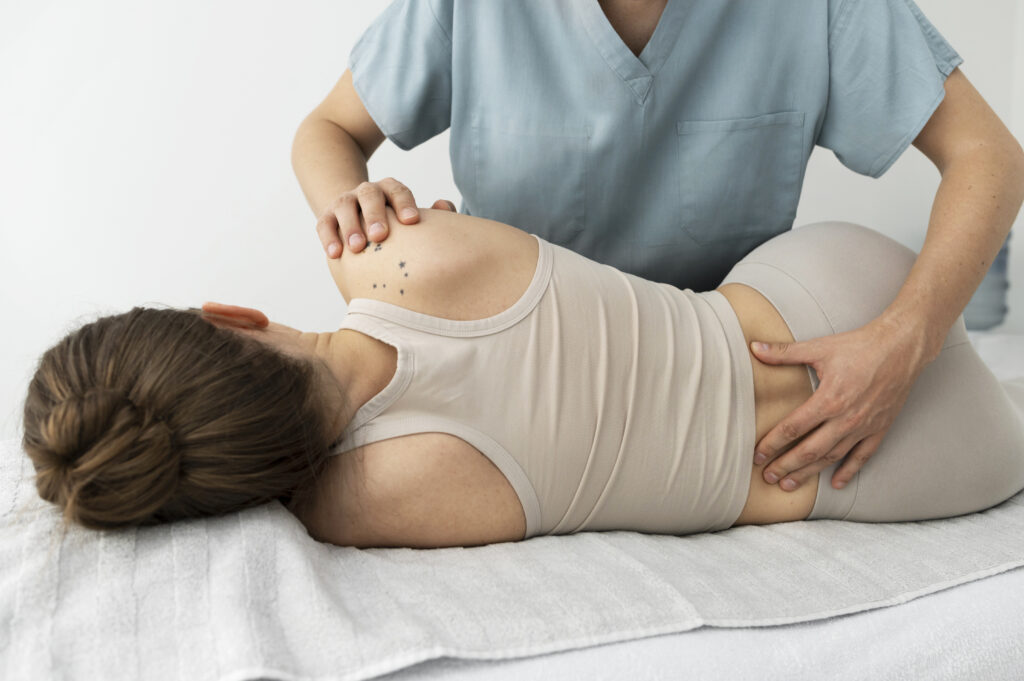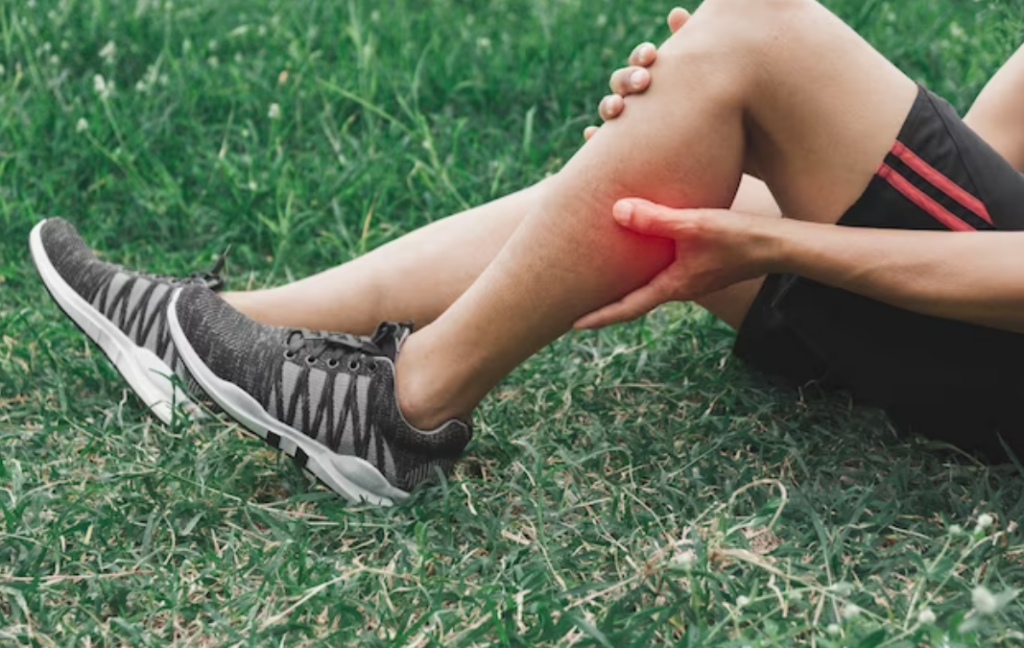When you face a sports injury, knowing how to recover effectively can make all the difference in your return to peak performance. It's essential to understand that recovery isn't just about resting; it involves a combination of strategic rehabilitation exercises, proper nutrition, and even mental strategies. You might be surprised by how much these elements can impact your healing process. As you explore these techniques, consider how each plays a role in not just recovery, but in preventing future injuries. The insights you gain may change your approach entirely.
Understanding Sports Injuries
Sports injuries can be a frustrating setback for athletes at any level. Understanding the nature of these injuries is vital for your recovery and future performance. Sports injuries typically fall into two categories: acute and chronic.
Acute injuries happen suddenly, often due to a specific incident like a fall or collision. You might experience sprains, strains, fractures, or contusions, and these injuries demand immediate attention.
Chronic injuries, on the other hand, develop over time, often due to repetitive stress on a particular body part. If you've been pushing yourself too hard without proper conditioning, you might find yourself dealing with issues like tendonitis or stress fractures. Understanding the type of injury you're facing helps you take the right steps toward recovery.
Pay close attention to the symptoms you experience. Pain, swelling, and bruising are common indicators that something's wrong. Recognizing these signs early allows you to seek medical advice sooner rather than later.
Additionally, knowing your body's limits is essential. It's easy to push through discomfort, but ignoring pain can lead to more severe injuries.
Educate yourself on the common injuries associated with your sport. Each sport has its risks, and being aware of them can help you prevent injuries in the first place.
Importance of Rest
Rest is essential for speeding up your healing process after a sports injury.
By allowing your body the downtime it needs, you can prevent further injuries and recover more effectively.
Ignoring the importance of rest can set you back in your recovery journey, so listen to your body.
Healing Process Acceleration
When you're dealing with a sports injury, it's important to slow down and prioritize your recovery. Rest isn't just a break; it's a critical part of the healing process. When you give your body time to recover, you're allowing it to repair tissues and regain strength.
Skipping rest can lead to prolonged recovery times and even worsen your injury.
Listen to your body. If you push through the pain, you risk delaying your return to full activity. It's tempting to jump back in, but patience pays off. During this time, focus on gentle movements or rehabilitation exercises as advised by your healthcare provider. This helps maintain flexibility and circulation without overexerting yourself.
Incorporating adequate sleep into your routine is also vital. Quality sleep supports cellular repair and boosts your immune system, making your recovery even more effective.
Hydration and proper nutrition further enhance the healing process, providing your body with the fuel it needs to recover.
Preventing Further Injuries
Ignoring the need for rest can lead to a cycle of re-injury that hampers your progress. When you push yourself too hard, you're not allowing your body the time it needs to heal properly. This can result in lingering pain and setbacks that make it harder for you to return to your sport.
Taking a break doesn't mean you're giving up; it's a vital part of the recovery process. Make sure you listen to your body and recognize the signs that it's time to rest. If you feel persistent pain or discomfort, don't hesitate to give yourself permission to step back.
Incorporating rest days into your routine can help you avoid overexertion. Focus on low-impact activities like swimming or cycling during recovery to maintain your fitness without risking further injury.
Moreover, consider proper sleep as an essential component of recovery. Quality sleep aids in muscle repair and overall health.
Nutrition for Recovery
Proper nutrition plays an essential role in your recovery from sports injuries. When you're healing, the right nutrients can greatly influence the speed and effectiveness of your recovery. Focusing on a balanced diet filled with the right components helps your body repair and rejuvenate itself.
To maximize your recovery, consider incorporating these key elements into your meals:
- Lean Proteins: Foods like chicken, fish, and legumes help rebuild muscles and tissues.
- Healthy Fats: Avocados, nuts, and olive oil reduce inflammation and support cellular repair.
- Colorful Fruits and Vegetables: Rich in vitamins and antioxidants, items like berries, spinach, and bell peppers boost your immune system.
- Whole Grains: Brown rice, quinoa, and oats provide essential carbohydrates for energy and recovery.
- Hydration: Drinking plenty of water and electrolyte-rich beverages keeps your body functioning effectively.
Paying attention to portion sizes and meal timing is also vital. Eating smaller, more frequent meals can guarantee your body has a constant supply of nutrients.
Aim to consume a combination of protein and carbohydrates within 30 minutes post-activity, as this can enhance muscle recovery.
Rehabilitation Exercises
When you're recovering from a sports injury, rehabilitation exercises are essential for getting back on your feet.
You'll want to focus on strengthening your muscles safely while also working on your range of motion.
These targeted exercises will help you regain function and prevent future injuries.
Strengthening Muscles Safely
Rebuilding your strength after an injury is essential for a successful recovery, and choosing the right rehabilitation exercises can make all the difference.
You'll want to focus on exercises that safely target the affected muscles, helping you regain strength without risking further injury. Start slow and listen to your body.
Here are some effective strengthening exercises to contemplate:
- Isometric holds: Engage your muscles without moving the joint, perfect for initial recovery stages.
- Resistance bands: Use these for gentle resistance, allowing you to control the intensity as you progress.
- Bodyweight exercises: Incorporate modified squats or lunges, ensuring you maintain proper form and alignment.
- Light weights: Start with low weights to build strength gradually, increasing the load only when you feel ready.
- Stability exercises: Include balance work like single-leg stands to enhance your overall stability and coordination.
Range of Motion Exercises
As you progress in your recovery, incorporating range of motion exercises into your routine is essential for restoring flexibility and mobility. These exercises help maintain and improve joint function, which is vital after an injury. Start with gentle movements that don't cause pain. Gradually increase the intensity as you gain confidence and strength.
Focus on the specific joints affected by your injury. For instance, if you've injured your knee, perform exercises like knee bends or ankle pumps. If your shoulder is the issue, try arm circles or wall slides. Aim for 10-15 repetitions for each exercise, and do them at least once a day.
Pay attention to your body's signals. If you experience sharp pain or swelling, stop the exercise and consult a healthcare professional. Remember that consistency is key; even short sessions can make a significant difference over time.
Finally, consider combining these exercises with other rehabilitation techniques, like stretching or strengthening exercises, to maximize your recovery. By actively engaging in your rehabilitation, you'll not only regain your range of motion but also enhance overall performance in your sport.
Physical Therapy Options
Physical therapy options play an essential role in your recovery from sports injuries, ensuring you regain strength and mobility effectively.
When you work with a physical therapist, they'll create a personalized plan tailored to your specific needs. This approach not only speeds up your recovery but also helps prevent future injuries.
Here are some common physical therapy techniques you might encounter:
- Therapeutic Exercises: These are designed to improve flexibility, strength, and endurance, focusing on the injured area.
- Manual Therapy: Your therapist may use hands-on techniques to manipulate the muscles and joints, easing pain and improving mobility.
- Modalities: Treatments like ultrasound, electrical stimulation, or ice/heat therapy can reduce inflammation and promote healing.
- Balance Training: Engaging in balance exercises helps restore stability and coordination, which is vital for returning to your sport.
- Education: Your therapist will educate you on proper body mechanics, injury prevention, and safe return-to-play protocols.
Mental Recovery Strategies
Recovering from a sports injury isn't just about physical healing; it also requires a strong mental approach. Your mindset plays a vital role in the recovery process. First, acknowledge your feelings. It's normal to experience frustration, anxiety, or even sadness. By recognizing these emotions, you can better manage them and avoid letting negative thoughts derail your progress.
Visualization is an effective tool for mental recovery. Picture yourself successfully completing a workout or returning to your sport. This technique can help reinforce a positive mindset and boost your confidence.
Combine visualization with goal setting. Set realistic, achievable goals for your recovery that focus on both physical milestones and mental wellbeing. Celebrate your small wins, as they'll keep you motivated and engaged in the process.
Stay connected with your support system. Whether it's teammates, friends, or family, talking about your challenges and experiences can help alleviate stress. Surround yourself with positive influences who encourage you during this time.
Additionally, consider incorporating mindfulness practices into your daily routine. Techniques like meditation or deep-breathing exercises can help you stay present and reduce anxiety.
Lastly, remember to be patient with yourself. Recovery is a journey that takes time, and maintaining a positive attitude can make a significant difference. Embrace the challenges, learn from them, and focus on the progress you're making.
Preventing Future Injuries
How can you safeguard against future injuries after recovering from one?
It's vital to take proactive steps to guarantee your body is ready for the demands of your sport. By following a few key strategies, you can minimize the risk of re-injury and enhance your overall performance.
First, focus on strengthening the muscles around your previously injured area. This helps provide stability and support. Consider incorporating exercises that target these specific muscle groups.
Additionally, maintaining flexibility is important. Stretching regularly can prevent tight muscles that may lead to injuries.
Here are five effective strategies to prevent future injuries:
- Warm-Up Properly: Spend at least 10-15 minutes warming up before each session to prepare your body for physical activity.
- Cross-Train: Engage in different forms of exercise to reduce repetitive strain on the same muscle groups.
- Listen to Your Body: Pay attention to any signs of discomfort or fatigue, and don't push through pain.
- Stay Hydrated: Drink plenty of water before, during, and after your workouts to keep your muscles functioning at their best.
- Use Proper Gear: Invest in the right footwear and equipment tailored to your sport, as this can greatly enhance your stability and protection.
Conclusion
To sum up, prioritizing rest, proper nutrition, and targeted rehabilitation exercises is essential for effective sports injury recovery. Don't underestimate the power of mental recovery strategies—visualization and goal setting can greatly boost your healing process. By taking a holistic approach, you not only enhance your recovery but also set yourself up for future success. Remember, staying proactive about prevention will help you avoid injuries down the line, allowing you to return to your sport stronger than ever.



